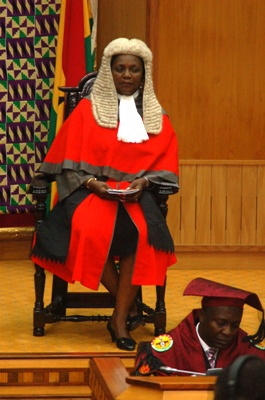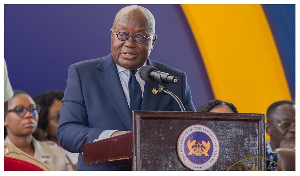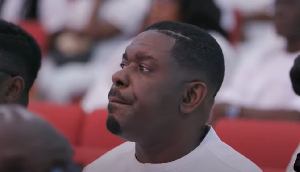The purported circular which emanated from the office of the Judicial Secretary in June 2008, in which crimes such as treason, hijacking, robbery and narcotics offences were to be sent to the Office of the Chief Justice for further action, has turned out to be an illegality on the part of the judiciary.
The circular which was copied to the Chief Registrar-General of the high court as well as the Inspector General of Police (IGP), but have not been made known to Attorney-General’s Department, the General legal Council and the Judicial Council, appears inconsistent with laws that the Chief Justice has sworn to uphold.
When the state went to court in the Kennedy Agyapong's case to start a committal procedure at the magistrate court as the law prescribes, Magistrate, Patricia Quansah declined to hear the committal procedure on the basis of lack of jurisdiction as a result of the Chief Justice’s directive.
The courts and its jurisdiction over criminal matters are a creation and an act of parliament, and any changes to such procedure needed legislative instrument.
As we may be aware, the judiciary has no such powers and this very action of the Chief Justice is not supported by law.
There is a clear legal procedure that says that there must be a committal procedure in offences that are covered by section 96(7) of Act 30. The state went to the magistrate court to start the process and the magistrate declined to hear the committal procedure on the basis of lack of jurisdiction as a result of the CJ’s directive.
The implication of such directive is that the circuit court would not be able to hear any committal procedure on any offences covered by section 96(7) of Act 30. What it then means is that we need a legislative instrument to alter something of this nature prescribed by an act of parliament.
The chief justice did not observe the due process and it appears she is superintending illegality.
The so-called administrative directive of the Chief Justice is completely Ultra Vires the powers of the Judiciary and we must compel the Chief Justice to come clear on the matter.
Chapter 11, Article 157 of the fourth republican constitution is explicit on this issue;
(1) There shall be a Rules of Court Committee which shall consist of -
(a) the Chief Justice, who shall be Chairman;
(b) six members of the Judicial Council other than the chief Justice nominated by the Judicial Council;
(c) two lawyers, one of not less than ten and the other of not more than five years' standing, both of whom shall be nominated by the Ghana Bar Association.
(2) The Rules of Court Committee shall, by constitutional instrument, make rules and regulations for regulating the practice and procedure of all courts in Ghana
Article 159 also states that:
The Chief Justice may, acting in accordance with the advice of the Judicial Council and with the approval of the President, by constitutional instrument, make regulations for the efficient performance of the functions of the Judicial Service and the Judicial Council under this Chapter.
Now the question is does the directive by the Chief Justice conform to either of these two articles? Was it the Rules Committee that advice? If so, is it backed by a Constitutional instrument?
There are legal procedures that need to be followed in altering anything that is already prescribed in the constitution or by an act of parliament.
Being a Chief Justice does not mean, one can issue administrative directive(s) that seem to contradict the constitution and laws which you are supposed to protect.
It is also surprising that the Attorney-General’s department was not informed of this administrative directive.
Per the copy of the letter The True Statesman has cited, even the judicial council was not informed of such directives, and that makes it unusual.
The Judiciary doesn’t work in isolation? It works with the Attorney-General's department in matters of prosecution, and it is only proper for the Chief Justice to notify the relevant department it works with when changes to procedure have occurred.
General News of Monday, 30 April 2012
Source: True Statesman
Chief Justice caught pants down

















